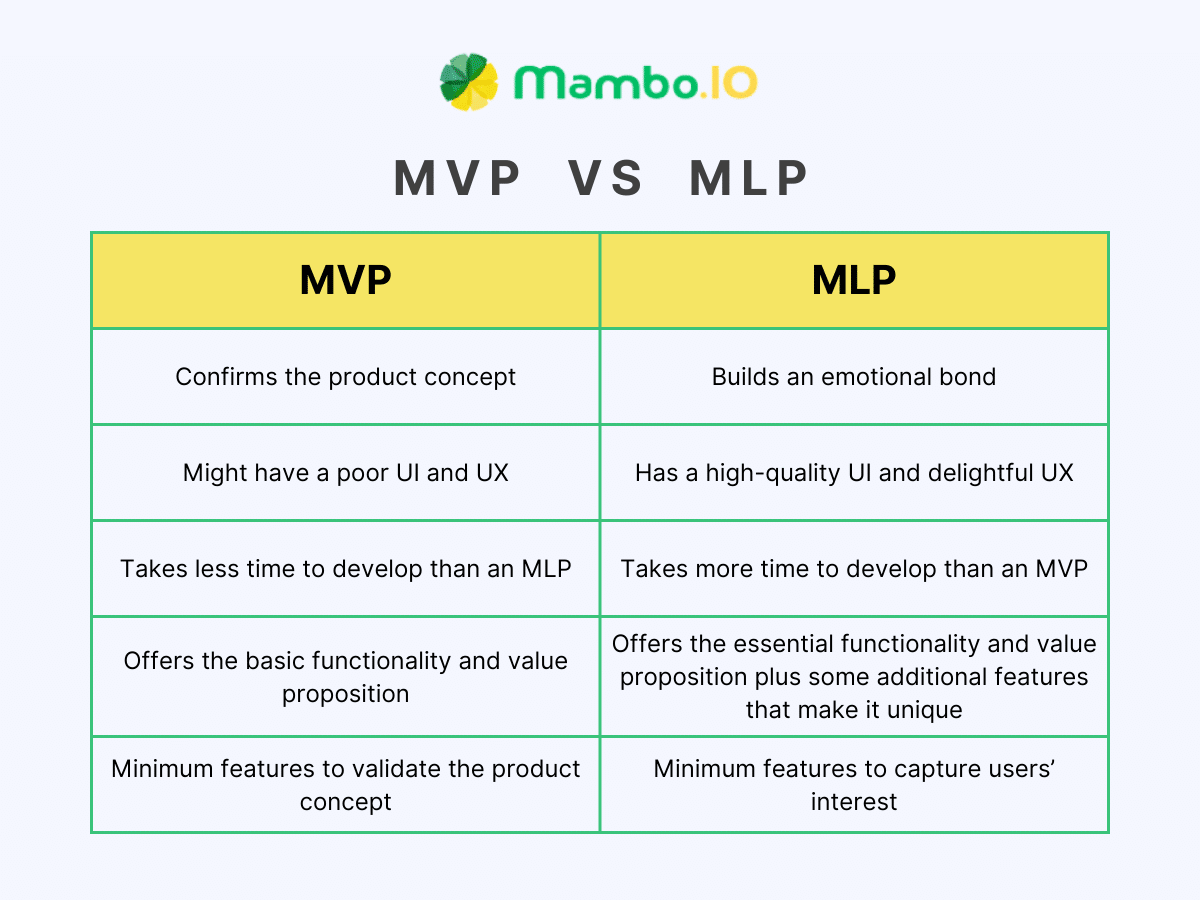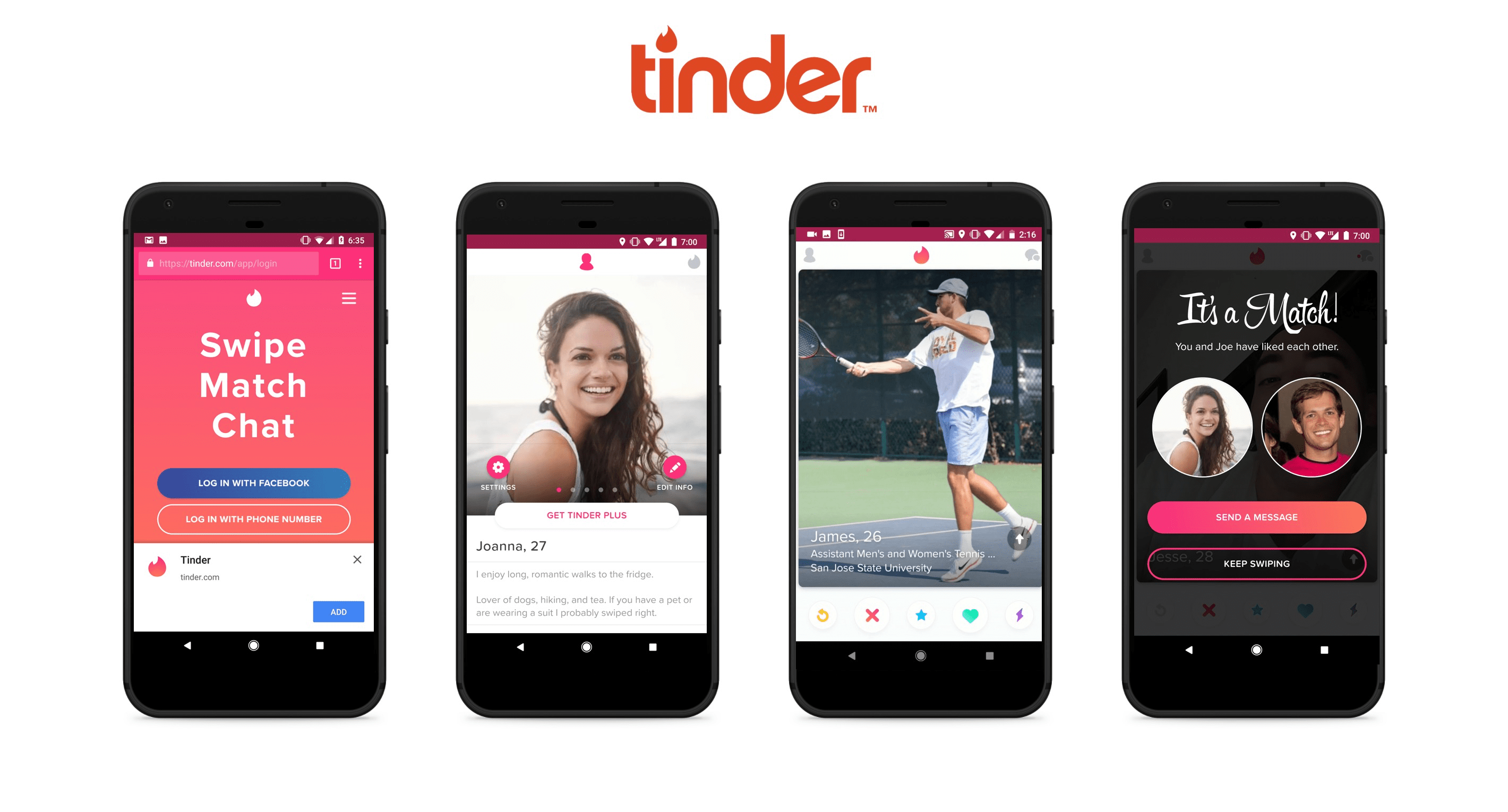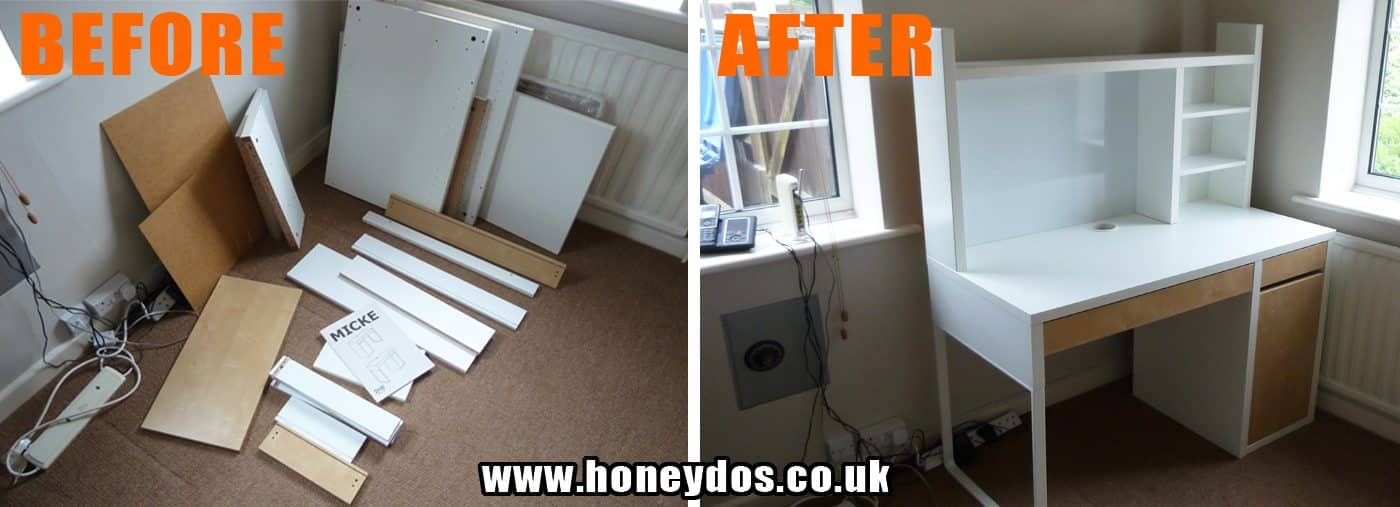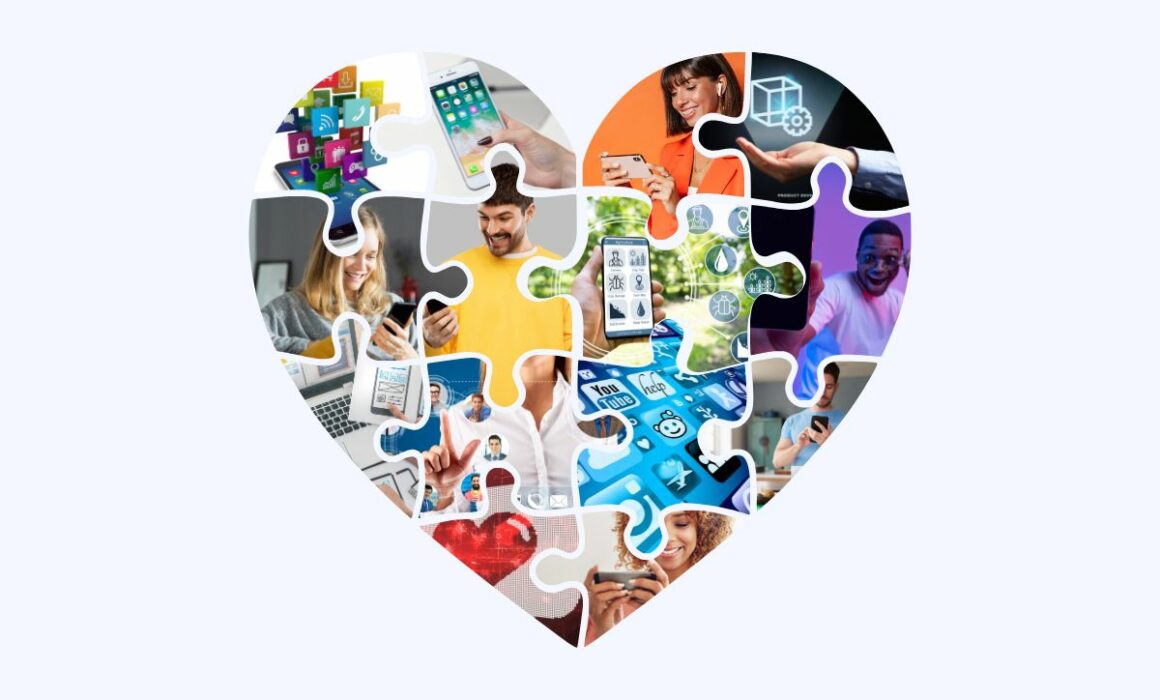Minimum Lovable Product: Creating Products That People Love
Minimum Lovable Product (MLP) is a concept every product manager should know and apply. It is an initial product version that customers will love from the start. It includes an appealing look and well-thought value that delight customers.
This article will teach you what MLP is and how it differs from MVP. You will also learn the main features of minimum lovable products and how to make one.
Table of Contents
- What is Minimum Loveable Product definition?
- Minimum Viable Product vs. Minimum Loveable Product
- What are the key characteristics of a lovable product?
- The benefits of creating your MLP product
- Successful MLP Products and Their Outcomes
- How to turn MVP Into a Minimum Lovable Product
- How to build a minimum lovable product
- Conclusion
- Machine Learning In Finance: 12 Essential Applications
- How To Create Interactive Compliance Training For Bank Employees
- How Fintech Apps Are Using Gamification To Increase User Engagement
- Top Gamification Companies for Employee & Customer Engagement
What is Minimum Loveable Product definition?
A Minimum Lovable Product is an initial offering that users love from the start. It represents the minimum required customers to adore a product rather than merely tolerate it.
The MLP serves as a counterpoint to the Minimum Viable Product (MVP) and the Minimum Marketable Product (MMP).
Minimum Viable Product (MVP) is a product version with just enough features to be used by early adopters to provide feedback for future development. The MVP concept validates the product idea and tests the core assumptions.

The Minimum Marketable Product (MMP) is a marketable and profitable product version for companies with just enough features for customers. This focuses its effort on delivering product value and optimising profitability.

Source: Productfolio
On the other hand, the Minimum Lovable Product approach, focuses on making an emotional reaction or connection with the users and delivering a delightful user experience.
The concept of MLP was coined by Brian de Haaff in 2013. He argued that bringing happiness to customers helps businesses grow in the long run. The MLP approach aims to exceed user expectations and create a ‘wow effect’.
Minimum Viable Product vs. Minimum Loveable Product
Let’s compare their definitions and features better to understand the main difference between MVP and MLP.
Minimum Viable Product (MVP) is a minimal product version with only the essential features. It is usable by early adopters to give qualitative feedback for future development.
Its characteristics are:
- Focuses on validating the product idea and testing the core assumptions.
- Solves a specific problem for a specific segment of users.
- Provides the basic functionality and value proposition.
- It may have a low-quality design and user interface.
- May have bugs and errors.
- It may not generate positive emotions or loyalty among users.
The Minimum Lovable Product (MLP) strategy follows MVP concepts. However, MLP aims for minimum viable products to earn the target audience’s or customers’ affection. It has minimal costs and a minimum set of priorities to have customers adore it from the start.
Its characteristics are:
- Focuses on creating an emotional connection with the users and delivering a delightful user experience.
- Solves a real problem for a large group of users.
- Provides the essential functionality and value proposition, plus some extra features that make it stand out.
- Has a high-quality design and user interface.
- Has fewer bugs or errors.
- Generates positive emotions and loyalty among users.
This table shows the comparison between Minimum Viable Product and Minimum Lovable Product:

What are the key characteristics of a lovable product?
Lovable products do more than meet user needs. It also makes them happy, loyal, and content. A lovable product has four key characteristics:
-
User experience focus
Using a lovable product is a smooth, intuitive, and enjoyable experience. It works fast, reliably, and consistently without any friction or frustration. It also understands users’ needs and preferences and provides personalised or alternative solutions.
-
Emotional connection with users
A lovable product makes users feel emotionally attached to it and to what it represents. Their choices and actions make them happy, proud, and motivated.
A sense of belonging to something larger than themselves, such as a community or a cause they value, also fills them. A lovable product evokes positive emotions such as confidence, satisfaction, or empowerment.
-
High-quality design and functionality
Lovable product has a stunning, sleek, and appealing design that draws the user’s attention and interest. It also has high-quality functionality that fulfils its promises and exceeds the user’s expectations.
It has no faults, mistakes, or glitches that may affect its performance or reliability.
-
Ability to solve a real problem for users
A lovable product addresses a real problem that users face in their lives or work. It has a clear value proposition that solves the user’s pain points and goals.
A unique solution that distinguishes it from other products in the market is also part of it. It shows how it can improve the user situation or outcome.
The benefits of creating your MLP product
Making a minimum lovable product benefits not only the users but also the product managers and the business. The benefits of making an MLP product are the following:
-
Increased user adoption and retention
An MLP draws in more users and retains them. Users love and show an MLP product by trying, using, and recommending it. They show it more than a product they only tolerate. An MLP product also reduces the churn rate and increases the customer lifetime value.
-
Better user feedback and engagement
A minimum lovable product also encourages user feedback and engagement by creating a product that users love.
They are keen to share their opinions, suggestions, and stories with a product they care about and can also interact with other users and the product team. A minimum lovable product builds a strong sense of community and belonging among users.
-
Greater potential for user referrals and word-of-mouth marketing
An MLP benefits from more user referrals and word-of-mouth marketing, as users are happy to tell others about a product they love. A minimum lovable product also establishes a positive brand image and reputation. It forms customer habits and entices your target audience or attracts more potential customers.
Successful MLP Products and Their Outcomes
#1. Tinder

Source: Tinder
Tinder’s swipe feature is a minimum lovable product that lets users swipe to show interest in other users. It is simple, fun, and addictive, and it connects users emotionally. It helps users find matches fast and efficiently, making Tinder popular and successful.
#2. IKEA

Source: HoneyDo’s
Customers can easily transport and assemble IKEA’s flat-pack furniture at home, an MLP that is convenient, affordable, and fun. It connects customers emotionally and helps them buy furniture without hassle or high costs. IKEA has become very successful and popular because of it.
How to turn MVP Into a Minimum Lovable Product
Let’s use a food delivery app as an example to show how to transform an MVP into an MLP. The app’s MVP lets users order food from local restaurants and get it delivered. The MVP would have the following features:
- List of nearby restaurants.
- A menu of available dishes.
- Cart to add items.
- Checkout process to pay for the order.
- Tracking system to monitor the delivery status.
The MVP would address a specific problem for a specific segment of users who want to order food online. But it lacks emotional appeal and user satisfaction. It would also compete with many similar apps on the market.
To turn this MVP into an MLP, let’s add features that make it unique and lovable. Here are some possible features that could make this MVP into MLP:
- Personalised recommendation system that suggests dishes based on user preferences, mood, occasion, or dietary restrictions.
- A gamified loyalty program that rewards users with points, badges, discounts, or freebies for ordering food regularly or inviting friends.
- Social media integration that lets users share their orders, reviews, photos, or videos with other users or on other platforms.
- Chatbot or live chat feature lets users talk to the restaurant staff or the delivery person if they have any issues or questions.
- A feedback system that allows users to rate and review their orders, restaurants, dishes, or delivery persons.
These features offer a smooth, intuitive, and enjoyable user experience that connects with the user’s emotions.
They solve a big problem for many users. They also look great and work well. They would also have a stunning design and reliable functionality that fulfils its promises and surpasses the user’s expectations.
How to build a minimum lovable product
To make a minimum lovable product, follow some guidelines and best practices. These are some tips on how to help you with that:
-
Understand user pain points and needs
To build an MLP, you must conduct user research to understand their pain points and needs. Various qualitative data methods, like surveys, interviews, focus groups, and other tools, are used to collect and synthesise user data.
You can use it to gather feedback and insights, such as personas, user stories, etc.
-
Focus on user experience
Next, design a product that provides a smooth, intuitive, and enjoyable user experience. Consider the user’s journey from the first touchpoint to the last. Eliminate any friction or frustration that may arise along the way, and offer personalised solutions.
Use tools like prototypes or mockups to design and test your idea or product’s interface and functionality.
-
Design for emotional connection
Then, create a product that appeals to users’ emotions and values. Make them feel good and connected to others or the causes they care about.
Use gamification, storytelling, social proof, or feedback to test an idea. Add hooks and evoke positive emotions in passionate users, such as joy, excitement, or gratitude.
-
Build a high-quality product
After that, deliver a high-quality product with a beautiful, elegant, attractive design. Ensure your product has a reliable functionality that fulfils its promises and surpasses user expectations.
You must ensure that your product is flawless, error-free, and bug-free, ensuring its performance and credibility. You can use tools like code review, testing, debugging, or quality assurance to check your product’s quality.
-
Continuously iterate and improve
Finally, continuously iterate and improve your product based on user feedback and data. Analyse your feedback and validated data to identify your product’s strengths and weaknesses.
Implement changes and improvements to enhance your product’s value and user experience. Repeat this process until you achieve your desired outcomes.
Conclusion
Minimum lovable product is a concept that focuses on creating products that users not only find helpful but also enjoyable. MLP aims to deliver value, delight, and attract customers rather than just meet their basic needs.
Building an MLP is difficult, but following some steps and best practices makes it possible. Understanding your user, focusing on UX, creating an emotional connection, delivering quality, and iterating and improving is essential.
If you are looking for a tool to help you build an MLP for your product or project, you should check out Mambo. Mambo is a gamification platform that lets you create fun and motivating products with gamified elements.
Mambo can help you create products that users love from the start. Try it today!
Download your free
“Gamification Guide”
Get your PDF now and start transforming your approach to digital engagement!
Latest Posts
Machine Learning In Finance: 12 Essential Applications
The impact of machine learning on finance is significant. Thanks to this technology, financial institutions are now equipped to make efficient decisions. Through the analysis of data sets, machine learning […]
How To Create Interactive Compliance Training For Bank Employees
Banking compliance training isn’t just another task. It’s the stage where everything else performs. Banks must navigate a myriad of regulations and laws. After all, this is a trust-driven, high-stakes […]
How Fintech Apps Are Using Gamification To Increase User Engagement
Discover how gamification in fintech is revolutionizing financial engagement, making banking fun & boosting user loyalty.





